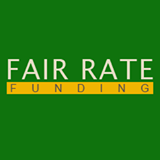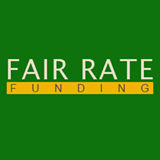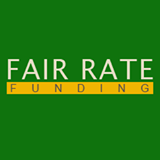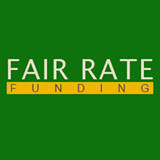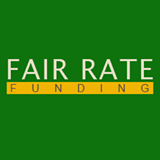Car Accident Settlements – A Typical Personal Injury Lawsuit Type
Car accidents are a typical personal injury lawsuit type. They arise when one party is harmed by another through no fault of their own. Generally, car accident cases involve claims of physical, economic and other damages on behalf of the injured/harmed party. In this post, we explore how car accident settlements work.
Recognizing the Need to Protect Citizens
Society understands there are trade-offs with any human advancement. Accordingly, we protect individuals/entities from harm by recognizing certain causes of action to seek redress. Once such advancement is the use of motor vehicles for transportation. The trade-off is the possibility of harm due to another’s negligent behavior.
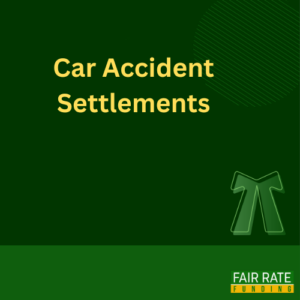
Understanding the possibility of harm is one thing. Another is protecting people from it. In the case of automobile injuries, there is enough data for insurers to assess the likelihood of loss. This creates the ability for drivers to insure against this possibility. Indeed, having automobile insurance coverage in place is mostly a pre-requisite for the lawful operation of motor vehicles throughout the United States. Virginia and New Hampshire are currently the only states which do not require car insurance.
Civil Justice System Aims
The civil justice system aims to place plaintiffs in the same position as they were prior to being “wronged” by a defendant(s). If this cannot be practically accomplished (like in the case of permanent personal injuries), then compensation comes in the form of money.
Car accident settlements begin when injured parties make claims for compensation. At-fault parties turn these claims to their insurers. Insurers investigate, process and if necessary, settle the matter for their policy holders.
Negligence is the legal framework from which car accident settlements naturally arise. In fact, car accidents are the ideal type of negligence lawsuit since liability is often easily established. Car accident settlements are based upon a legal claim for damages under the legal system – the very system which is designed to compensate victims under established negligence laws.
Car Accident Settlements – Initiating the Process
Initiating a claim that will eventually become a car accident settlement involves proving the at-fault driver was negligent. Negligence requires the plaintiff prove the defendant had a duty to exercise reasonable care, the defendant breached that duty, this breach caused the plaintiff’s injuries or damages, and that the plaintiff suffered actual harm as a result. These elements are crucial in establishing liability and seeking compensation in a car accident settlement.
So the first step is uncovering who is at fault. If the other party was negligent, the next step is finding out how the plaintiff was harmed. Most car accident settlements involve claims for personal injuries sustained as a result of the accident. Other personal injury damages include lost wages, medical costs, property damage and other out of pocket costs.
If there are damages, then the last requirement is uncovering who has the money available to compensate the plaintiff. In most car accident settlements, there is an insurance policy in place to pay for damages. The ability to pay damages is the final piece in the puzzle.
The Car Accident Settlement Process
The car accident settlement process involves multiple steps which are outlined below. These are typical of car accident settlement negotiations but some individual cases may not require all of the phases listed.
Gathering Evidence
The first phase of the process involves collecting evidence to support the claim. This may include photos of the accident scene, witness statements, police reports, medical records, and other relevant documentation.
Make a Demand
Most lawyers will compile a demand letter which sets forth the claim in detail. In it, plaintiffs outline the claim and the reasons why settlement is appropriate. Since settlements make sense for all parties, some insurers will entertain settlement and make a settlement offer prior to formal proceedings being initiated.
Formal Complaint and Service
If settlement offers are simply low-ball attempts to settle cheaply, plaintiffs initiate formal proceedings by drafting a complaint (also known as a petition or lawsuit) outlining the case and filing it with the appropriate court. The defendant must be formally served with the complaint and a summons, which informs them of the lawsuit and their obligation to respond.
Discovery
Both parties exchange information and gather evidence through the discovery process. This may include depositions, interrogatories (written questions), requests for documents, and possibly expert witness reports.
Negotiation
During the litigation phase but before going to trial, opportunities for settlement negotiations often arise.
If You Have Any Questions, Call 888-964-2224
WE ARE HERE TO HELP YOU!
Settlement or Trial
When car accident settlement negotiations fail to yield a satisfactory offer, plaintiffs may choose to pursue justice at trial. This opens a whole other area of legal system delays plaintiffs must endure.
Even if a trial is successful and a jury renders a verdict in favor of a plaintiff, the post trial process still awaits. This can include:
- Post-Trial Motions: After the verdict, either party may file post-trial motions. These motions can include:
- Motion for Judgment Notwithstanding the Verdict (JNOV): This motion asks the court to overturn the jury’s verdict because there was insufficient evidence to support it or because the jury reached a decision that was contrary to the law.
- Motion for a New Trial: This motion asks the court to order a new trial on the grounds that there were errors during the trial (such as improper jury instructions, misconduct by jurors or attorneys, or newly discovered evidence).
- Entry of Judgment: If no post-trial motions are filed, or if they are denied by the court, the judge will enter a judgment based on the jury’s verdict. This judgment specifies the amount of damages awarded to the plaintiff if the defendant was found liable.
- Appeals: Either party may appeal the judgment to a higher court if they believe that legal errors were made during the trial that affected the outcome. Appeals are typically heard by appellate courts, which review the trial record and legal arguments presented by both parties.
Car Accident Settlement Takeaways
As you can see, the car accident settlement process can be a long, drawn out affair. Many plaintiffs must wait many months or even years before receiving compensation. Legally entitled plaintiffs generally seek car accident settlements to avoid these delays. Sometimes delays are unavoidable, leaving many plaintiffs in financial trouble.
Auto Accident Settlement Funding is an Option
When this situation arises, car accident lawsuit loans can be a viable solution. Lawsuit loans are financial transactions that keep plaintiffs financially afloat while they pursue justice. Plaintiffs use lawsuit funding to pay for all types of expenses, such as:
- Medical treatment and surgery loans
- Living expenses
- Housing
- Transportation
- Past debts
- School tuition
- and more . . .
Why Choose Fair Rate Funding
You obviously have a choice in who you use for legal funding. We offer:
- Simple and Easy Process – Approval only on the strength of your case.
- Risk – Free Proposition – Only repay if you win your case.
- Rapid Approval and Funding – Approvals often within 24 hrs.
- Up Front Pricing – Absolutely no hidden fees.
Give us a call and learn about your options. We are here to help and are at your service.



